This post may contain affiliate links. Please see our disclosure for more information.
The question of how much protein a person really needs is an unsettled question, but I definitely err on the side of “less than you probably think.”
There have been researchers who have tried to construct a diet deficient in protein, but they find it nearly impossible to do.

It seems that only if you attempted to live on mostly refined sweets like cakes, donuts, jams, and jellies, would you lack in protein. A fruitarian diet would also lack protein.
That said, a very low protein diet isn’t recommended for most people. So how to ensure your health?
If you desire a healthy vegetarian diet, or a mostly vegetarian diet, it is very important to emphasize whole foods, the right kind of cooked legumes, and even cooking itself.
Legumes, dairy, eggs, nuts and seeds, and green vegetables are all great sources of vegetarian protein.
So let’s explore: how much protein do you really need?
Why protein?
Protein is a component of every human cell, and is necessary for growth and development.
We also need protein for blood clotting, fluid balance, immune response, vision, and the production of hormones, antibodies, and enzymes.
What is protein?
Proteins are made up of amino acids. Essential amino acids are those not produced by the body that must be obtained externally.
There are nine essential amino acids, and a complete protein contains all nine essential amino acids.
Animal products (such as dairy) and meats are complete proteins, while many plant-based sources are incomplete.
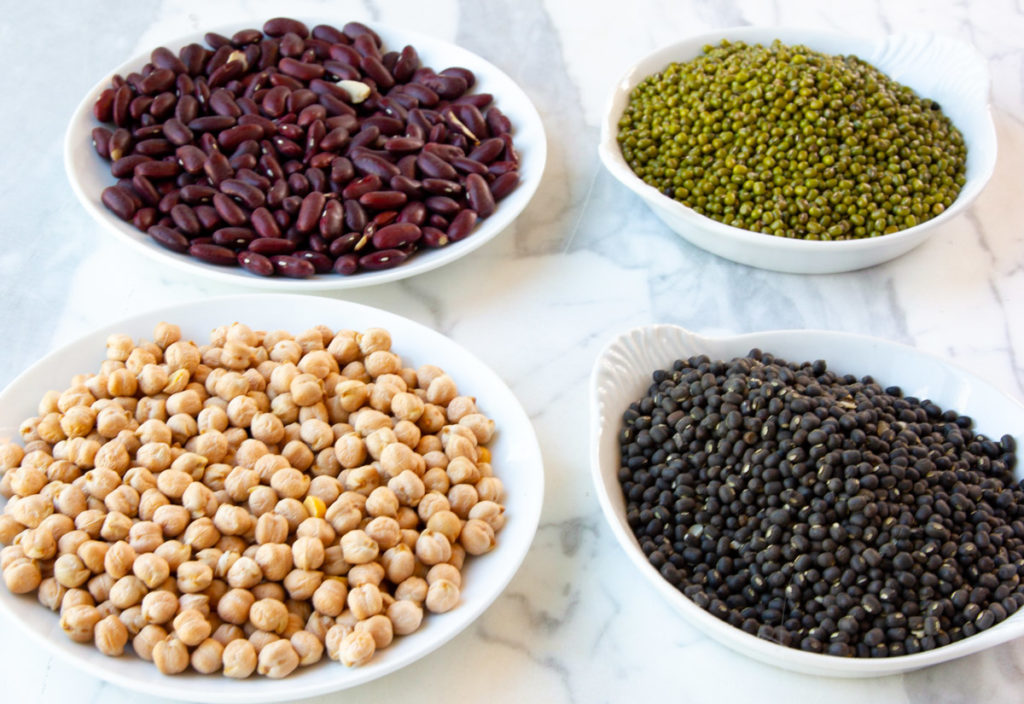
In this case, you’ll need two or more sources to get the essential amino acids.
Rice and beans is a classic vegetarian food combination that forms a complete protein. As long as you eat multiple whole foods in a meal you should be fine.
How much protein do I need?
Nutritionists and experts disagree on how much protein a person actually needs, with estimates varying from 10-35% of total calories.
For a relatively active adult, 10% of daily calories is sufficient to meet the recommended daily allowance set forth by the U.S. government, according to Harvard Health.
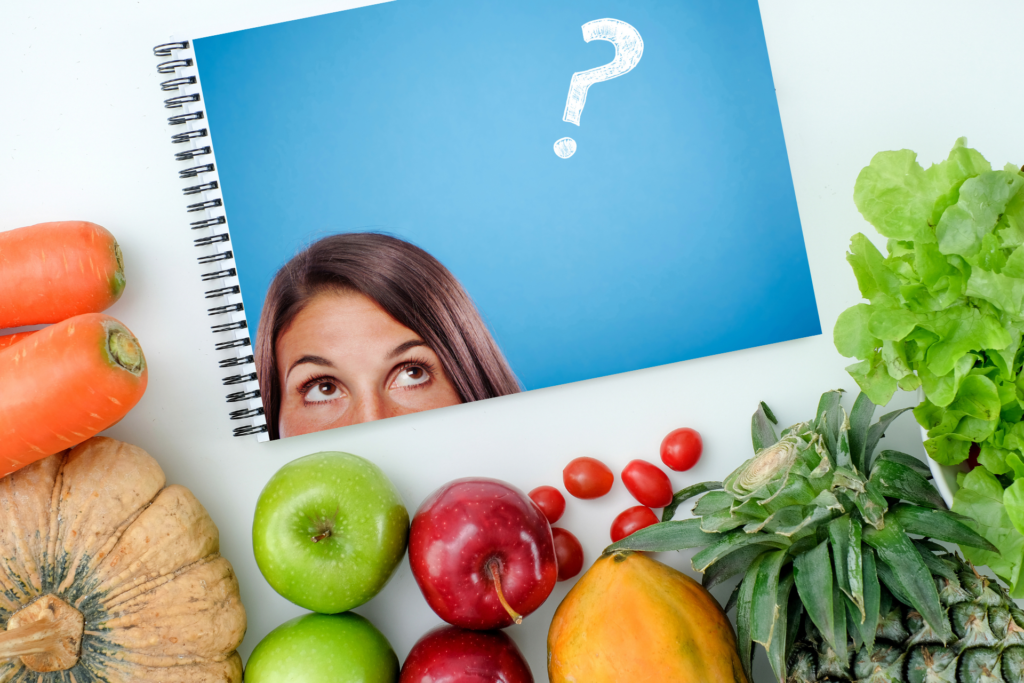
A takeaway here is that you might not need as much protein as you think. Americans tend to be obsessed with protein, and this is the result of intensive marketing to this effect.
There are reasons why you might not want as much protein.
Between 4% and 8% protein is considered a low-protein diet, and a low-protein diet may have many health benefits for individuals with liver disease or impaired kidney function, according to Healthline, citing studies.
Too much protein is associated with kidney damage, increased cancer risk, heart disease, calcium loss, weight gain, constipation, diarrhea, and bad breath.
The relatively recent high-protein paleo and keto diets require from 20-35% protein as a percentage of daily calories, and then they greatly restrict carbs in favor of fat.
For reference, the average American gets 16% protein, with many getting far more than this.
When doing research online, be sure you know what interest group is behind the information.
The meat lobby, and the cultural ethos around protein in America has been built up very strong and proud. You may need to free yourself from this in order to see things differently.
Who needs higher protein?
Experts say that pregnant and nursing mothers, children and adolescents, those with illnesses, and athletes may need a higher protein diet.
Where protein is digested
Understanding the impact of protein on digestion is not a small matter.
Protein is digested in the mouth (by chewing), in the stomach, and in the small intestine with the help of enzymes.
Proteins that are not fully digested and absorbed in the small intestine pass into the large intestine and are excreted in stools.

Unprocessed proteins may also be sent to the liver to deal with.
All amino acids that are extracted from proteins also filter through the liver.
In cases of liver weakness, excess protein can cause liver stress, which is then passed on to the kidneys in the form of the waste product urea.
From an Ayurvedic perspective, protein is considered “difficult to digest,” and so people with compromised digestion would likely see some benefit from less protein.
Protein is also a top culprit in food allergies and intolerances.
Taking the strain off the digestive system by reducing protein intake may promote overall digestive function.
As a digestive health coach, I always encourage clients to stay in touch with how dietary changes make them feel.
Remember, the key to health is not how much protein you ingest, but rather, how much protein you can safely and efficiently digest.
What about a vegetarian diet?
To thrive on a vegetarian diet, or with mostly vegetarian sources of protein, it is important to emphasize whole foods that contain both protein and fiber.
Fiber is necessary to support friendly bacteria in the gut that contribute to metabolic health.
You don’t want to fall into the trap of low protein combined with poor quality carbs.
Such a ratio can create poor metabolic health, according to a study published in the News Medical Life Sciences on the topic of low-protein, high carbohydrate diets.
A high-protein vegetarian diet can easily be achieved by emphasizing high quality vegetarian protein sources.
Vegetarian protein sources
Protein is not only found in meat; most foods contain at least some protein, and that means almost all vegetarian foods.
This should not be surprising, considering that protein is one of the three macronutrients in food, the others being carbohydrates and fats.
The best vegetarian sources of protein include legumes, dairy, eggs, nuts, seeds, whole grains, and vegetables. Especially vegetables. Many vegetables are extremely high in protein.
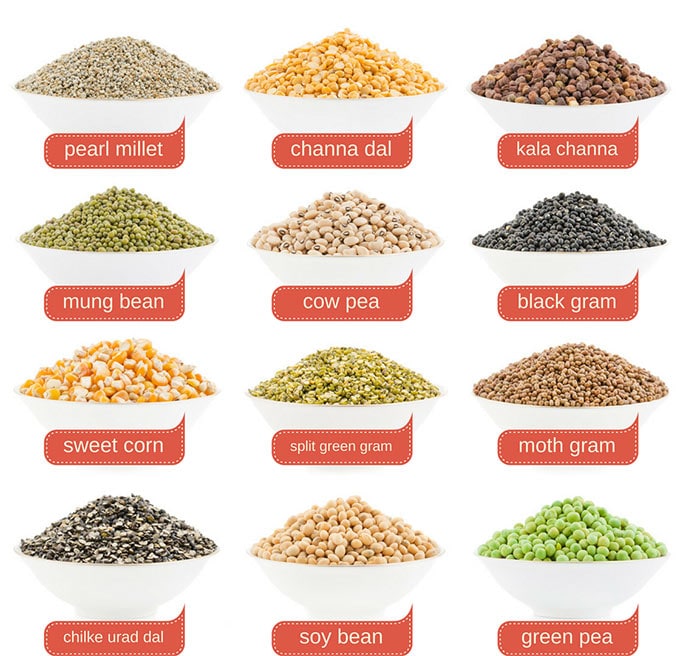
In fact, there are many vegetarian options that contain even more protein than beef, which has 32% protein by weight, according to USDA data compiled by Vaidya Atreya Smith in “Ayurvedic Nutrition.”
Vegetarian protein rich foods
Many vegetarian foods are surprisingly high in protein, such as vegetables, whole wheat, other whole grains, nuts, seeds, legumes, and dairy.
| Food Ingredients | Protein Content (%) |
|---|---|
| Tofu | 40% |
| Asparagus | 32% |
| Broccoli | 45% |
| Brussel Sprouts | 44% |
| Cauliflower | 40% |
| Mushrooms | 38% |
| Parsley | 34% |
| Spinach | 49% |
| Watercress | 40% |
| Buttermilk | 40% |
| Cottage Cheese | 52% |
| Eggs | 33% |
Overall, the protein content of beans and lentils ranges from 23 to 40 percent.
This is not bad at all when you consider that fish is 26%, lamb is 22%, and pork is 23%.
Only turkey, at 41%, and chicken, at 44-56%, are significantly higher than legumes—but then spinach, broccoli, and cottage cheese are in the same ballpark—with only a fraction of the saturated fat content contained in meat.
Protein content by serving size
| Meat and Dairy | Portion Size | Grams Protein |
|---|---|---|
| Beef, chicken, turkey, pork and lamb | 3 oz. | 21 |
| Egg | 1 | 6 |
| Cottage Cheese (part skim) | 1/2 cup | 14 |
| Cheese | 1 oz. | 7-8 |
| Whole Milk | 1 cup | 8 |
| Yogurt (Whole) | 1 cup | 8.5 |
| Legumes, Whole grain and Nuts | Portion Size | Grams Protein |
|---|---|---|
| Lentils (cooked)) | 1/2 cup | 7 |
| Hummus | 1/3 cup | 8 |
| Quinoa (cooked) | 1 cup | 8.1 |
| Wild rice (cooked) | 1 cup | 6.5 |
| Millet (cooked) | 1 cup | 6.1 |
| Oatmeal (cooked) | 1 cup | 5.9 |
| Nuts | 1/4 cup | 4-6 |
| Vegetables | Portion Size | Grams Protein |
|---|---|---|
| Kale (cooked) | 1 cup | 2.47 |
| Zucchini (cooked) | 1 cup | 2.05 |
| Cauliflower (cooked) | 1 cup | 2.28 |
| Broccoli rabe (cooked) | 1 cup | 3.7 |
| Mushrooms (white; cooked | 1 cup | 3.39 |
| Brussel Sprouts (cooked) | 1 cup | 3.98 |
| Sweet potatoes (cooked) | 1 cup | 4.02 |
| Corn ((cooked) | 1 cup | 4.21 |
| Asparagus (cooked) | 1 cup | 4.32 |
| Spinach (cooked) | 1 cup | 5.35 |
| Winter squash (cooked) | 1 cup | 5.08 |
| Collard greens (cooked) | 1 cup | 5.15 |
| Potato (with skin) | large | 7.86 |
| Green peas (frozen and cooked) | 1 cup | 8.24 |
Sources and references for tables:
https://www.todaysdietitian.com/pdf/webinars/ProteinContentofFoods.pdf
https://www.eatthis.com/vegetables-protein-content/
https://www.myfooddata.com/articles/grains-high-in-protein.php
https://www.hopkinsmedicine.org/bariatrics/_documents/nutrition_protein_content_common_foods.pdf
Legumes as a protein source
Legumes are really the best source of vegetarian protein, since they are cheap, easy to grow, easy to cook, low in fat, and have ample quantity of both protein and fiber.
If you look at the culture with the longest history of vegetarian cuisine, you have to look to India, where today around one-third of the population is still strictly vegetarian.
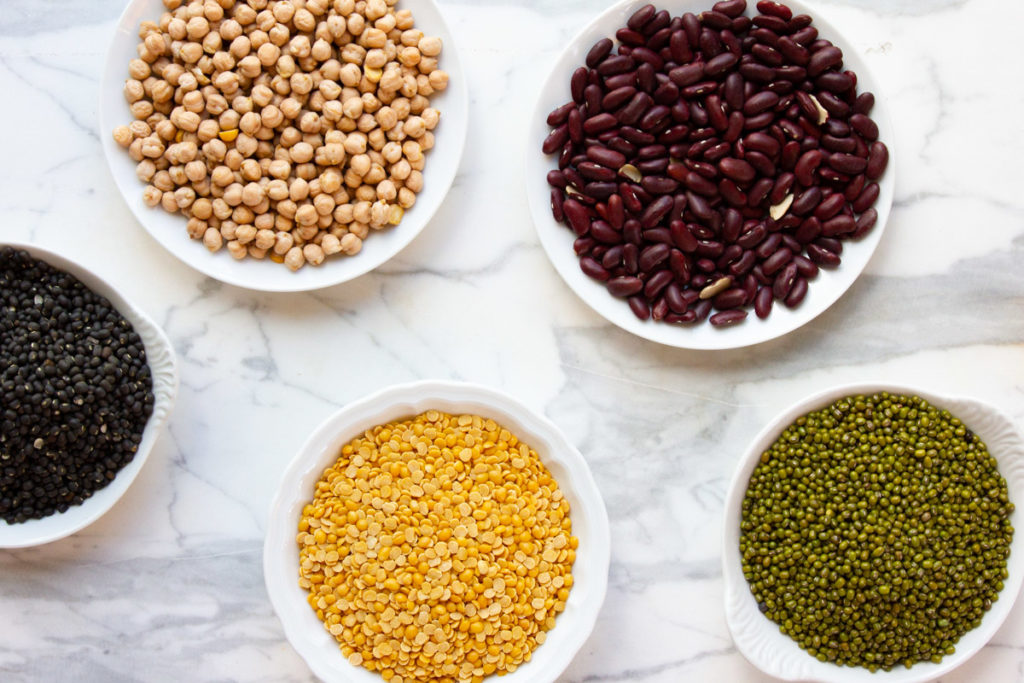
Vegetarians in India eat legumes daily, often for breakfast, lunch snacks, drinks, and supper.
In India, legumes appear in endless shapes and forms, from the classic dal or curry, to ground and fermented, to fried, to flours, to the use of legumes as spices, and in desserts.
Furthermore, the types of lentils and beans favored in Indian cuisine are very different from the black beans, pinto beans, and kidney beans most Westerners are familiar with, which are among the most difficult to digest of the legumes.
Indian legumes are far more diverse. The most significant difference you’ll notice is that Indian legumes tend to be tiny. Often they are hulled and split as well. You’ll also notice that many forms of dal break down into mush.
Legumes are notoriously difficult to digest, but it turns out that the tinier the legume is, the easier it is to digest. Removing the skin makes them easier to digest. Cooking them really well also helps.
Furthermore, when you cook legumes in a pressure cooker they get easier to digest, and when you cook legumes with the right spices, it also greatly enhances digestibility.
How to be a healthy vegetarian
I have a personal story about this. I was vegetarian in my 20s, but I did not have access to the types of legumes common in India, nor did I have knowledge of how to incorporate spices into my cooking as I do now.
I believe it was for this reason that I was an unhealthy vegetarian.
I was constantly craving carbs and sweets, and didn’t feel satisfied. This led me to start eating meat again.
Later in life, when I met my husband-to-be from India, who had never eaten meat in his life, I decided to go vegetarian again.
Naturally, I was introduced to the incredible variety of Indian vegetarian cuisine and I embraced the cooking style.
To my surprise, once I started to incorporate these new dishes into my diet, I never looked back as a vegetarian, and I no longer have these sorts of uncomfortable cravings.
I can say that I feel very balanced.
The need to cook
From experience, I believe that if you want to be healthy on a low-protein or mostly vegetarian diet, you must be committed to cooking from scratch on a regular basis.
Vegetarian cooking usually means that there will be more chopping and cooking time involved to make a satisfying vegetarian dish.
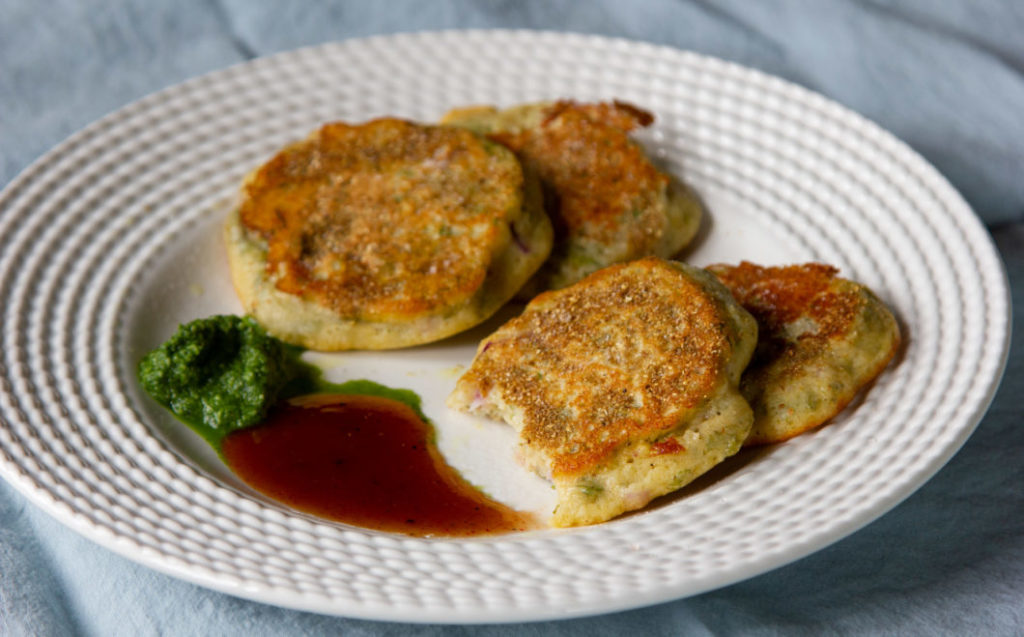
You might need to learn some new skills, or invest in some new kitchen tools to help yourself succeed.
Going meatless is not for the lazy cook.
You can browse the Buttered Veg recipe archives to discover ideas to get you started on your next meatless meal.
Recommended for you





